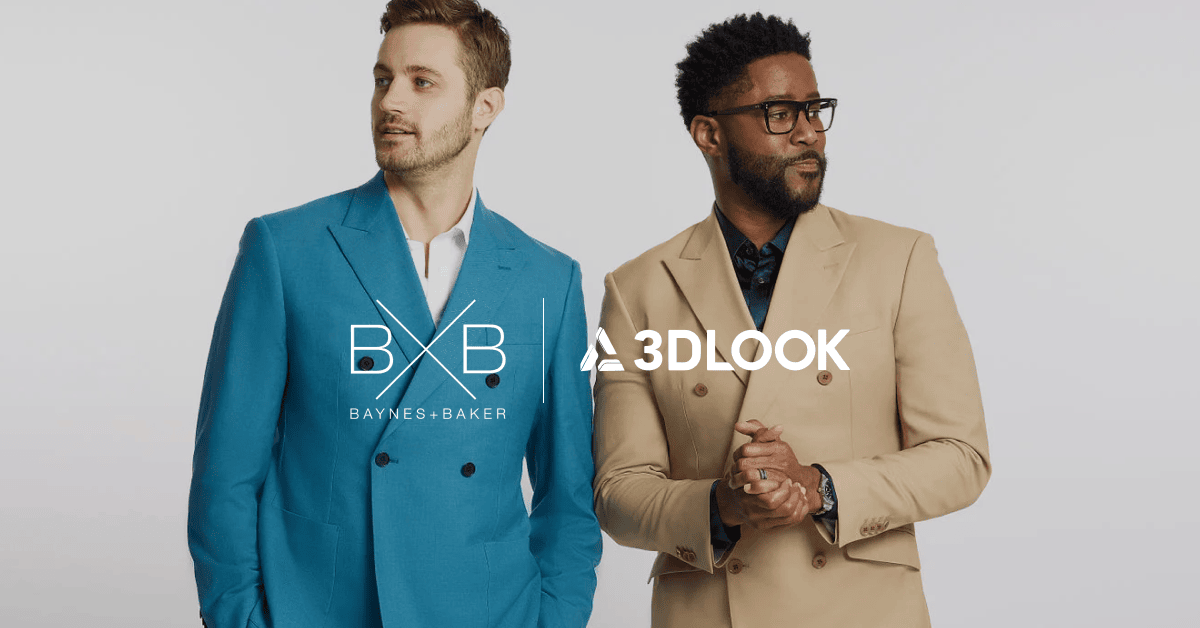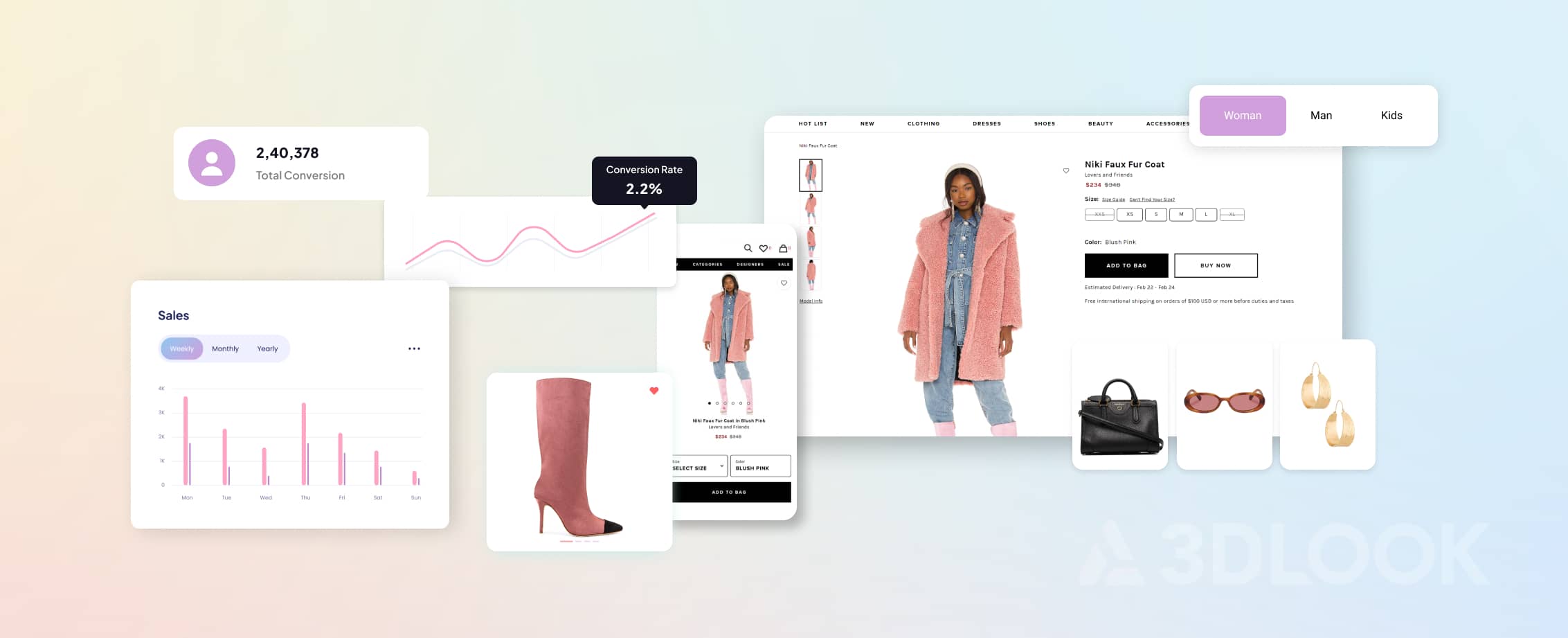From pollution and resource depletion to labor exploitation, traditional apparel production processes have been under fire for their unsustainable and sometimes unethical practices.
Amid growing awareness and demand for ethically produced garments, the fashion industry is transforming. Today, sustainable clothing production techniques emerge as a beacon of hope, offering a path to a more eco-friendly, less wasteful, and socially responsible future.
“Fashion can be incredibly wasteful and damaging to the environment, but it doesn’t have to be.”
Stella McCartney

The stark truth is that the fashion industry is massive and progressively expanding, but it’s also the sixth most polluting industry in the world.
Statista forecasts that the global apparel market will surge in worth, escalating from $1.5 trillion in 2020 to a staggering $2.25 trillion by 2025. While this exponential growth offers significant economic opportunities, it raises concerns about its potential ramifications.

YourFit is a simple, user-friendly, and intuitive fit personalization platform that helps shoppers find the best size clothing while also providing an engaging try-on experience.
YourFit is a simple, user-friendly, and intuitive fit personalization platform that helps shoppers
These include heightened environmental impacts, amplified challenges in managing global supply chains, exacerbated efficiency issues for fashion brands and retailers, and increased consumption rates worldwide.

The Rise of Sustainability in the Fashion Industry
With growing awareness of environmental and social issues, consumers have increasingly demanded ethically produced and eco-friendly clothing.
As a McKinsey survey highlights, 67% of consumers consider sustainable materials an important purchasing factor, and 63% view a brand’s promotion of sustainability similarly.
The fashion brands that have evolved manufacturing processes and embraced sustainability as a core value have also enjoyed economic success.
According to a Statista report, the sales share of sustainable clothing has steadily risen over the past decade, and the trend is forecasted to continue, with the market share set to reach over 6% by 2026.
The younger generations drive this growth, with millennials and Gen Z accounting for an estimated 68% of sustainable apparel revenue in the United States in 2022.
Environmental issues aside, ethical considerations about labor practices have also come to the forefront. Reports of exploitative labor and sweatshop conditions in garment factories have ignited consumer outrage. In countries like the Philippines or Bangladesh, children are still used as laborers in the garment industry.
As a result, consumers are increasingly drawn to brands that ensure fair wages, safe working conditions, and ethical treatment of workers throughout the manufacturing process.
Additionally, transparency and traceability have become key buzzwords in the sustainable fashion movement. Consumers want to know where their clothes come from, how they’re made, and under what conditions. Genuinely sustainable fashion brands should offer transparency in their supply chain, from sourcing raw materials to manufacturing and distribution.
In this regard, the global fashion industry needs to make faster progress. According to the 2023 Fashion Transparency Index, only half of the major fashion brands revealed their supplier list.
A positive example is Patagonia, known for its outdoor apparel. Patagonia is a pioneer in ethical fashion as the company has implemented fair labor practices, supports fair trade, and regularly audits its supply chain to ensure compliance with labor standards. Moreover, the brand is renowned for its commitment to sustainability across its product lines, which has garnered a loyal following among environmentally conscious consumers.

Key Players Leading the Way in Sustainable Fashion
While some brands have supported and promoted sustainability from the get-go, others have later adjusted their efforts to become environmentally friendly and promote social responsibility in the fashion industry.
Several sustainable clothing manufacturers have emerged as leaders in the fashion industry, combining style with eco-conscious practices.
The examples include:
- Eileen Fisher – a brand that focuses on timeless designs and sustainable materials, like organic cotton, recycled fibers, and responsible production processes. Eileen Fisher also operates recycling and resale programs to extend the lifespan of its garments.
- Reformation – a company known for its chic and trendy clothing made from sustainable materials. Reformation prioritizes eco-friendly fabrics like Tencel, organic cotton, and recycled polyester. The brand also implements energy-efficient manufacturing practices and offers carbon-neutral shipping.
- Veja – this French footwear brand prioritizes ethical sourcing and sustainable materials. The brand’s sneakers are made from organic cotton, wild rubber from the Amazon rainforest, and recycled plastic bottles.
- Pact – specializes in affordable and eco-friendly basics, including clothing and underwear. The brand uses organic cotton and fair trade practices to create comfortable and sustainable garments. Pact is committed to transparency and regularly audits its supply chain to ensure ethical production standards.

Technological Advances in Ethical Fashion Technology
From blockchain to AI, 3D printing to sustainable materials, technological innovations are paving the way for a future where fashion looks good and does good for the planet.
Biofabrication and sustainable materials
One of the most promising technological advancements in ethical fashion is the development of biofabrication. Companies like Bolt Threads and Modern Meadow are engineering sustainable materials using biotechnology.
Bolt Threads, for instance, has created Microsilk™, a protein-based material inspired by spider silk that offers a cruelty-free alternative to traditional silk production. Similarly, Modern Meadow produces biofabricated leather using a process that eliminates the need for animal hides, significantly reducing the environmental impact of leather production.
3D Printing and On-Demand Manufacturing
3D printing technology enables on-demand manufacturing and reduces waste by using organic, biodegradable, and recycled materials. This approach not only eliminates the need for excess inventory but also allows for greater design flexibility and personalization. Digital fabric printing has emerged as a method to offer unique patterns and designs while reducing dye and water usage.
Brands like Mango, Pangaia, and even footwear companies like New Balance and Adidas use 3D printing to produce customized garments and shoes with minimal material waste. This approach eliminates the need for excess inventory and allows for greater design flexibility and personalization.
AI and sustainable fashion design
Artificial intelligence (AI) is most often used for design optimization and to help brands reduce waste by predicting trends and consumer behavior. Moreover, AI can streamline production processes, leading to more efficient use of resources and less environmental impact.
For instance, Intelistyle’s AI-powered styling platform helps consumers make more sustainable fashion choices by suggesting outfit combinations based on their existing wardrobe and personal style preferences.
3DLOOK’s Mobile Tailor solution uses AI-driven algorithms to accurately measure customers’ body dimensions. This ensures that customers select the right size the first time, reducing the likelihood of returns. It helps save resources and reduce waste associated with return shipping but also minimizes the environmental footprint of the fashion supply chain.
Further reading:
Retail Shakeup: How AI is driving growth in fashion retailSustainability Challenges and Solutions in the Fashion Industry

The fashion industry faces many challenges, from economic pressure to supply chain disruptions. However, innovative solutions are emerging to drive sustainable practices and reshape the future of fashion.
According to the latest McKinsey State of Fashion report, the fashion industry will likely face a global slowdown due to economic pressure. Rising costs of living and high inflation are causing consumers to tighten their budgets, a pressing issue that weighs heavily on brands.
Moreover, ever since the pandemic, the industry’s supply chain has known significant disruptions, making it difficult for suppliers to deliver what is expected and forecast future consumption patterns. Manufacturers are diversifying their operations into new territories to overcome geographical constraints and take advantage of reduced labor costs, access to raw materials, and proximity to consumer markets.
However, these workarounds are harshly criticized and viewed negatively by consumers, who are increasingly concerned about issues like inclusivity, fair pay, and working conditions.
Thus, fashion brands are expected to act and support the best interests of all parties and overcome environmental impact, distrust, and the lack of diversity.
Technologies Fashion Brands Adopt to Support the On-demand Production Model

With the shift towards on-demand production models, fashion brands are increasingly turning to innovative technologies to streamline their production processes and offer customers more tailored experiences.
Case Studies: Success Stories of Sustainable Manufacturing Processes
Unspun.io is a sustainable fashion technology company pioneering on-demand manufacturing. Some of the ways they’re making a difference are through:
- Custom-Fit Denim Brand: Unspun has launched a custom-fit denim label based on a zero Inventory and minimized waste: the company follows a zero-inventory model via made-to-order clothing; this means they don’t hold stock and only create clothing pieces on demand, when these are ordered, significantly reducing textile waste.
- 3D Weaving: Unspun uses 3D weaving technology to reduce waste; instead of cutting and discarding extra fabric, the pioneering company has developed Vega™ technology, which transforms yarn into clothes in minutes. This allows for zero-waste production and circular reuse.
- Unspun has joined forces with Walmart to streamline clothing production, reduce waste, and enable on-demand, localized production, thus facilitating a low inventory model. This means Walmart can consolidate the supply chain necessary to make and distribute 3D woven work pants within the US, without affecting its competitive prices.
3DLOOK’s Mobile Tailor, is powering transformation to traditional apparel manufacturing. Where traditional manufacturing models often inaccurately predict consumer demand, leading to overproduction and inventory waste, an on-demand model powered by mobile body scanning drastically reduces these issues. It provides precise, individualized sizing, eliminating the need for customers to order multiple sizes for fitting, thus cutting down on returns and overcoming inconsistent sizing standards.
For instance, it helped Slø Jeans eliminate sizing inconsistencies by allowing customers to obtain accurate body measurements. Mobile Tailor’s integration with Slø Jeans’ online stores resulted in 90% accuracy, which solved the company’s issues with size-related returns and exchanges.

Top Innovative Health and Fitness Tech Companies in 2024
3DLOOK

Its solution, FitXpress, uses AI-powered body scanning technology to elevate health and fitness data tracking. It captures precise 3D body data, unlocking valuable data insights that help enhance customer health and fitness potential.
Key features include smart scales, body shape detection, fat ratio, body proportions, metabolic rate, obesity analysis (BMI), fitness progress, and results benchmarking. All of these help users compare their current proportions with previous scans, observing subtle changes in their body shape over time.
The user experience is simple and quick. Users enter their gender, height, and weight, follow voice instructions to take a front and side photo, and receive their results in under 45 seconds. FitXpress can generate over 72 precise body measurements per user, offering a wealth of insights and improved analytics.
FitXpress empowers businesses to support consumers in closely monitoring their fitness, wellness, and weight loss journeys.
Additionally, FitXpress enhances customer acquisition, engagement, and retention by visually showcasing a users’ weight loss progress, thereby boosting commitment. FitXpress body data enables the development of new premium features and hyper-personalized experiences, such as tailored workouts, product recommendations, and engagement strategies that improve user satisfaction and retention.









